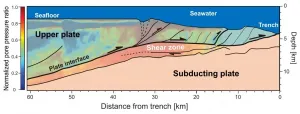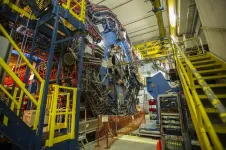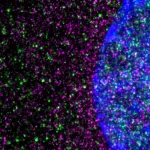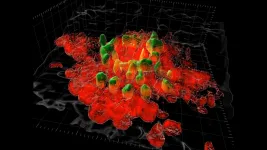Comet Catalina suggests comets delivered carbon to rocky planets
2021-03-05
(Press-News.org) In early 2016, an icy visitor from the edge of our solar system hurtled past Earth. It briefly became visible to stargazers as Comet Catalina before it slingshotted past the Sun to disappear forevermore out of the solar system.
Among the many observatories that captured a view of this comet, which appeared near the Big Dipper, was the Stratospheric Observatory for Infrared Astronomy (SOFIA), NASA's telescope on an airplane. Using one of its unique infrared instruments, SOFIA was able to pick out a familiar fingerprint within the dusty glow of the comet's tail--carbon.
Now this one-time visitor to our inner solar system is helping explain more about our own origins as it becomes apparent that comets like Catalina could have been an essential source of carbon on planets like Earth and Mars during the early formation of the solar system.
New results from SOFIA, a joint project of NASA and the German Aerospace Center, were published in the Planetary Science Journal.
"Carbon is key to learning about the origins of life," said the paper's lead author, Charles "Chick" Woodward, an astrophysicist and professor in the University of Minnesota Twin Cities Minnesota Institute of Astrophysics. "We're still not sure if Earth could have trapped enough carbon on its own during its formation, so carbon-rich comets could have been an important source delivering this essential element that led to life as we know it."
Frozen in Time
Originating from the Oort Cloud at the farthest reaches of our solar system, Comet Catalina and others of its type have such long orbits that they arrive on our celestial doorstep relatively unaltered. This makes them effectively frozen in time, offering researchers rare opportunities to learn about the early solar system from which they come.
SOFIA's infrared observations were able to capture the composition of the dust and gas as it evaporated off the comet, forming its tail. The observations showed that Comet Catalina is carbon-rich, suggesting that it formed in the outer regions of the primordial solar system, which held a reservoir of carbon that could have been important for seeding life.
While carbon is a key ingredient of life, early Earth and other terrestrial planets of the inner solar system were so hot during their formation that elements like carbon were lost or depleted. While the cooler gas giants like Jupiter and Neptune could support carbon in the outer solar system, Jupiter's jumbo size may have gravitationally blocked carbon from mixing back into the inner solar system.
Primordial Mixing
So how did the inner rocky planets evolve into the carbon-rich worlds that they are today?
Researchers think that a slight change in Jupiter's orbit allowed small, early precursors of comets to mix carbon from the outer regions into the inner regions, where it was incorporated into planets like Earth and Mars.
Comet Catalina's carbon-rich composition helps explain how planets that formed in the hot, carbon-poor regions of the early solar system evolved into planets with the life-supporting element.
"All terrestrial worlds are subject to impacts by comets and other small bodies, which carry carbon and other elements," Woodward said. "We are getting closer to understanding exactly how these impacts on early planets may have catalyzed life."
Observations of additional new comets are needed to learn if there are many other carbon-rich comets in the Oort Cloud, which would further support that comets delivered carbon and other life-supporting elements to the terrestrial planets. As the world's largest airborne observatory, SOFIA's mobility allows it to quickly observe newly discovered comets as they make a pass through the solar system.
INFORMATION:
SOFIA is a joint project of NASA and the German Aerospace Center. NASA's Ames Research Center in California's Silicon Valley manages the SOFIA program, science, and mission operations in cooperation with the Universities Space Research Association, headquartered in Columbia, Maryland, and the German SOFIA Institute at the University of Stuttgart. The aircraft is maintained and operated by NASA's Armstrong Flight Research Center Building 703, in Palmdale, California.
[Attachments] See images for this press release:

ELSE PRESS RELEASES FROM THIS DATE:
2021-03-05
When stay-at-home orders were announced as one of the greatest tools in our arsenal against the COVID-19 pandemic, anyone who's vintage enough to have watched forward-looking shows and movies-- from "The Jetsons" to "Star Trek" to "Back to the Future" -- might have thought America was ready to embrace a world where video calling and other tech-heavy communication options reigned supreme.
But one year, dozens of Zoom meetings, hundreds of phone calls and text messages, thousands of online gaming hours, and millions of social media posts later, new research led by UNLV has ...
2021-03-05
Researchers from the Harvard John A. Paulson School of Engineering and Applied Sciences (SEAS) found large quantities of previously undetectable compounds from the family of chemicals known as PFAS in six watersheds on Cape Cod using a new method to quantify and identify PFAS compounds. Exposures to some PFAS, widely used for their ability to repel heat, water, and oil, are linked to a range of health risks including cancer, immune suppression, diabetes, and low infant birth weight.
The new testing method revealed large quantities of previously undetected PFAS from fire-retardant foams and other unknown sources. Total concentrations of PFAS present in these watersheds were above state maximum contaminant ...
2021-03-05
Researchers from Japan and Indonesia have pioneered a new method for more accurately estimating the source of weak ground vibrations in areas where one tectonic plate is sliding under another in the sea. Applying the approach to Japan's Nankai Trough, the researchers were able to estimate previously unknown properties in the region, demonstrating the method's promise to help probe properties needed for better monitoring and understanding larger earthquakes along this and other plate interfaces.
Episodes of small, often imperceptible seismic events ...
2021-03-05
African American breast cancer survivors are four times more likely to die from breast cancer than women of all other races and ethnicities, and they have a disproportionately high rate of death from cardiovascular disease (CVD).
New research led by George Mason University's College of Health and Human Services faculty Dr. Michelle Williams assessed African American breast cancer survivors' risk factors and knowledge about CVD in the Deep South, where health disparities between African American women and women of other races is even larger. They found that although African American breast cancer survivors have a higher prevalence of CVD risk factors, their knowledge about CVD is low.
The study was published in the Journal of Health Disparities Research and Practice in February. ...
2021-03-05
UPTON, NY—Physicists studying collisions of gold ions at the Relativistic Heavy Ion Collider (RHIC), a U.S. Department of Energy Office of Science user facility for nuclear physics research at DOE’s Brookhaven National Laboratory, are embarking on a journey through the phases of nuclear matter—the stuff that makes up the nuclei of all the visible matter in our universe. A new analysis of collisions conducted at different energies shows tantalizing signs of a critical point—a change in the way that quarks and gluons, the building blocks of protons and neutrons, transform from one phase to another. The findings, just published by RHIC’s STAR Collaboration in the journal Physical ...
2021-03-05
Patients can spend up to six years waiting for a kidney transplant. Even when they do receive a transplant, up to 20 percent of patients will experience rejection. Transplant rejection occurs when a recipient's immune cells recognize the newly received kidney as a foreign organ and refuse to accept the donor's antigens. Current methods for testing for kidney rejection include invasive biopsy procedures, causing patients to stay in the hospital for multiple days. A study by investigators from Brigham and Women's Hospital and Exosome Diagnostics proposes a new, noninvasive ...
2021-03-05
BIRMINGHAM, Ala. - Studies of the microbiome in the human gut focus mainly on bacteria. Other microbes that are also present in the gut -- viruses, protists, archaea and fungi -- have been largely overlooked.
New research in mice now points to a significant role for fungi in the intestine -- the communities of molds and yeasts known as the mycobiome -- that are the active interface between the host and their diet.
"We showed that the gut mycobiome of healthy mice was shaped by the environment, including diet, and that it significantly correlated with metabolic outcomes," said Kent Willis, M.D., an assistant professor at the University of Alabama at Birmingham and co-corresponding author of the study, published in the journal Communications Biology. "Our results ...
2021-03-05
JUPITER, FL -- In 1993, scientists discovered that a single mutated gene, HTT, caused Huntington's disease, raising high hopes for a quick cure. Yet today, there's still no approved treatment.
One difficulty has been a limited understanding of how the mutant huntingtin protein sets off brain cell death, says neuroscientist Srinivasa Subramaniam, PhD, of Scripps Research, Florida. In a new study published in Nature Communications on Friday, Subramaniam's group has shown that the mutated huntingtin protein slows brain cells' protein-building machines, called ribosomes.
"The ribosome has to keep moving along to build the proteins, but in Huntington's disease, the ribosome is slowed," Subramaniam says. "The difference may be two, three, four-fold ...
2021-03-05
The body is amazing at healing itself. However, sometimes it can overdo it. Excess scarring after abdominal and pelvic surgery within the peritoneal cavity can lead to serious complications and sometimes death. The peritoneal cavity has a protective lining containing organs within our abdomen. It also contains fluid to keep the organs lubricated. When the lining gets damaged, tissue and scarring can form, creating problems. Researchers at the University of Calgary and University of Bern, Switzerland, have discovered what's causing the excess scarring and options to try to prevent it.
"This is a worldwide concern. Complications from these peritoneal adhesions cause pain and can lead to life-threatening small bowel obstruction, and infertility in women," says Dr. Joel Zindel, MD, University ...
2021-03-05
Researchers at Indiana University School of Medicine have successfully reprogrammed a glial cell type in the central nervous system into new neurons to promote recovery after spinal cord injury--revealing an untapped potential to leverage the cell for regenerative medicine.
The group of investigators published their findings March 5 in Cell Stem Cell. This is the first time scientists have reported modifying a NG2 glia--a type of supporting cell in the central nervous system--into functional neurons after spinal cord injury, said Wei Wu, PhD, research associate in neurological surgery at IU School of Medicine and co-first author of the ...
LAST 30 PRESS RELEASES:
[Press-News.org] Comet Catalina suggests comets delivered carbon to rocky planets







